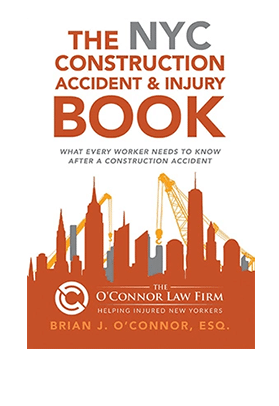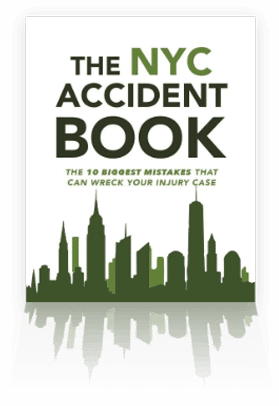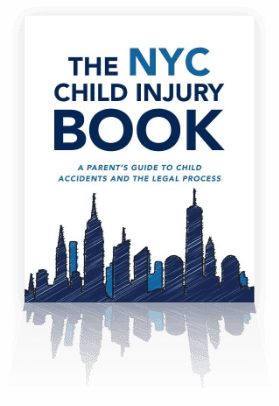Staten Island Premises Liability Lawyer
Holding Property Owners Accountable when Hazardous Conditions Injure Our Clients
Under state law, property owners, landlords, and tenants are responsible when they do not maintain their property in a safe condition and someone is injured. This is the law of premises liability. Many people are seriously hurt when they visit private or public property and encounter some hazard that causes a serious accident.
If you have been involved in an accident, get legal help immediately. Premises liability claims can be more difficult and complex than people imagine. There are many thorny legal and factual issues in these cases, and a seasoned legal advocate is a big help. Brian J. O’Connor is an experienced Staten Island premises liability attorney who has negotiated many favorable settlements for clients.
How People are Injured in Premises Liability Accidents
Property owners, as well as those who occupy land or buildings, often fail to fix dangerous conditions which can injure a visitor. Our clients have ended up in the hospital after being injured in:
- Slip-and-fall accidents. A person can slip on some hazard inside or outside a building. Hazards include ice or snow accumulation, worn carpets, spilled liquids, and condensation.
- Hotel accidents. A guest can be injured in the lobby, hallways, gym, swimming pool, or in their rooms as a result of a hazardous condition or unsafe equipment.
- Supermarket or retail store accidents. Falling merchandise or collapsing store shelves can cause serious injuries to customers. Careless staff can overload shelves or put heavy items up too high. These items can injure unsuspecting customers when they fall.
- Construction site accidents. Construction workers, along with members of the public, can be hurt by falling objects, unsafe equipment, or if scaffolding or cranes collapse.
- School and daycare accidents. Many schools fail to supervise children or fail to properly maintain their buildings, including broken windows, doors, stairs, and slippery floors.
- Elevator or escalator accidents. Victims are injured when negligently maintained escalators or elevators stop abruptly, midlevel, or snag a body part.
- Negligent security. Property owners must provide reasonable security based on many factors, such as the level of crime in the area. If you are attacked in a shopping mall, store, or apartment building that lacks necessary security, you could sue.
Premises liability accidents vary in scope and damages, but they all stem from dangerous conditions. Sometimes, the property owner created the dangerous condition themselves, while in other situations, the condition is naturally occurring (like ice or snow) but the owner didn’t clear it or inspect their property to find it.
A Property Owner’s Duty to You
New York law requires that property owners and those in possession of the property maintain a reasonably safe environment. This does not mean that they must do everything humanly possible to prevent injury on the land or in their buildings. However, it doesn’t allow them to stick their head in the sand and overlook dangerous hazards or to create hazards themselves.
Determining whether you have a claim depends on many factors, including whether you were on the property legally or illegally. Generally, property defendants do not owe the same duty of care to trespassers, unless those trespassers are children, who might be drawn onto property by an attractive nuisance, such as:
- Swimming pools
- Hot tubs
- Abandoned refrigerators or appliances
- Machinery
- Trampolines
Another factor is the owner’s prior knowledge (or notice) of the hazard. A property defendant must fix or warn visitors of any hazard they have actual or “constructive” notice of. Actual notice can exist when they see the hazard or someone informs them of it. Property defendants have constructive notice when the dangerous condition has existed so long that a careful property owner would have discovered it.
Even when they know of a hazard, owners and occupiers must have a reasonable amount of time to correct it. For example, if a customer spilled water on the floor, the store might need to go get a mop and bucket to clean it. If someone immediately falls right after the spill, the store might not be responsible. Likewise, property owners must remove snow and ice from sidewalks and parking lots, but they don’t need to do this in the middle of the storm.
How Property Defendants Limit their Liability
If you are injured in a fall or other accident, the defendant will often refuse to admit liability. Instead, we see many property owners defend against claims by arguing the following:
- Open and obvious hazard. Property owners will often argue that there is no duty to warn of a condition that a reasonably careful person should see on their own. For example, if a parking lot has a large pothole.
- Comparative fault. Victims are sometimes negligent themselves. For example, a person walking across a parking lot could step into a pothole, but they were reading a text message at the time. Because the victim wasn’t careful, New York law reduces the amount of compensation they can receive.
- Failure to mitigate injuries. The defendant might claim your injuries following the accident were minor and only worsened because you failed to seek timely medical care.
Brian J. O’Connor knows how to counter these arguments. For example, even if a hazard was open or obvious, a property defendant still has a duty to fix it in a reasonable amount of time.
How a Premises Liability Attorney in Staten Island Can Help
Premises liability claims are complex. Not only must we show that a dangerous condition existed, but we must establish the full scope of our client’s injuries. Someone without legal representation might fail to build a sufficiently solid case on their behalf.
Ideally, an accident victim would get a picture of any hazard that injured them, using their cell phone if necessary. Icy sidewalks can melt, and collapsed shelves could be removed in a day or two — but a picture lasts forever.
Our team can visit the accident scene, if necessary, to find other evidence. We can also talk to witnesses about what they observed. Witnesses are particularly important when there is no picture of the hazard.
Brian J. O’Connor can also help clients document their injuries. New York law allows victims to receive compensation for all financial losses, like medical bills, property damage and lost income. When injuries are serious, these losses are considerable. Someone with a traumatic brain injury, for example, may not be able to return to work.
Our clients can also receive money to make up for losses like pain, suffering, and emotional distress. This is where a skilled lawyer shows their value. Because these losses are hard to see, we collect evidence to establish the full physical and emotional toll inflicted by your injuries.
Time Limits for Staten Island Premises Liability Claims
Accident victims must pay attention to time limits that apply to any personal injury case. In New York, we have a general statute of limitations that is three years. You must file a lawsuit before the deadline, otherwise, you will lose out on the ability to sue in court.
Those injured on public property face shorter deadlines. Before a victim can sue the City of New York, for example, they must file a notice of claim with the relevant department within 90 days of the accident. A case can be dismissed for failure to follow this procedure.
Contact Our Staten Island Premises Liability Attorney Today
Premises liability accidents leave our clients in extreme states of physical and emotional pain. This is not the time to try and negotiate a settlement with a negligent property defendant on your own. Instead, reach out to The O’Connor Law Firm today to learn more about your legal rights. We are happy to meet with anyone for a free consultation.




